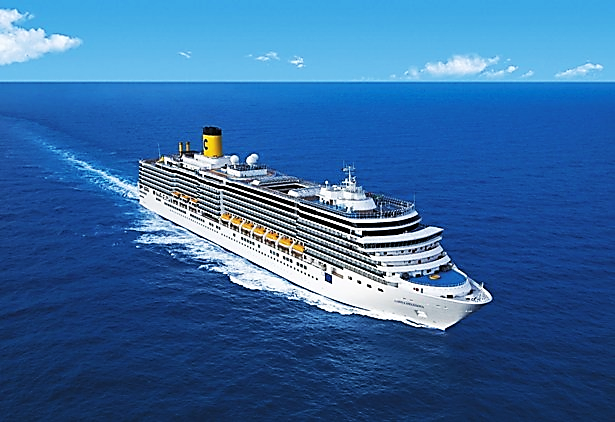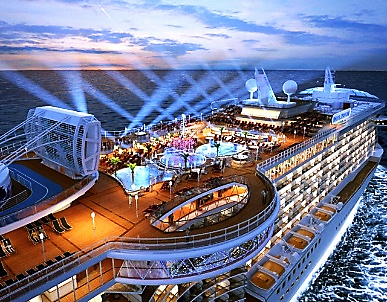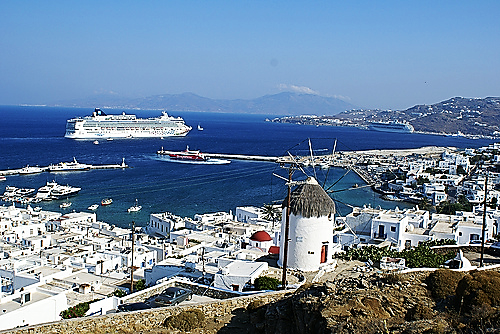Cruise market records growth

Cruise market is one of the fastest growing sectors in the tourism industry, with a significant contribution to the economic growth. Indeed, despite the economic crisis, sea tourism was one of the few internationally developed industries, with cruises accounting for the highest growth rate. The cruise industry offers not only transport, but also accommodation and leisure services.
The number of consumers who opted  for the cruise increased from 3.8 million passengers in 1990 to more than 22.2 million in 2015 and is expected to exceed 25.3 million passengers in 2019. In 2015 more than 62 cruise lines were recorded operating 471 cruise ships (78 more than in 2013).
for the cruise increased from 3.8 million passengers in 1990 to more than 22.2 million in 2015 and is expected to exceed 25.3 million passengers in 2019. In 2015 more than 62 cruise lines were recorded operating 471 cruise ships (78 more than in 2013).
Demand for cruise comes mainly from North American residents (59%). In recent years, European demand for cruise packages has increased with European passengers accounting for about 26% of the global cruise market. Germany and the UK are those European countries most interested in cruise trips (28% and 26% respectively), while other major markets for this type of tourism are Italy, France and Spain.
The  most popular cruise destinations are the Caribbean and Europe (mainly the Mediterranean). Within the Caribbean, the Bahamas, Cozymel Island (Mexico), US Virgin Islands, Saint Martin, the Cayman Islands, Jamaica and Puerto Rico are the most popular destinations.Among European tourists who choose cruise trips, Europe is the most popular destination. For example,
most popular cruise destinations are the Caribbean and Europe (mainly the Mediterranean). Within the Caribbean, the Bahamas, Cozymel Island (Mexico), US Virgin Islands, Saint Martin, the Cayman Islands, Jamaica and Puerto Rico are the most popular destinations.Among European tourists who choose cruise trips, Europe is the most popular destination. For example, 54% of Europeans cruising in 2014 visited the Mediterranean and Atlantic islands while 21% visited Northern Europe. The remaining 25% traveled outside Europe, mainly in the Caribbean.
54% of Europeans cruising in 2014 visited the Mediterranean and Atlantic islands while 21% visited Northern Europe. The remaining 25% traveled outside Europe, mainly in the Caribbean.
• The cruise market in Greece
 Cruise in Greece is an important form of tourism. Greece and the Greek Islands are considered to be among the top cruise ship destinations for several years. Undoubtedly the country’s history, the climate conditions, the natural beauty of the coast, as well as the geographical location and the small distances between the Greek islands make it an attractive tourist destination. It should also be mentioned that Greece is a focal point for all Eastern Mediterranean cruises.
Cruise in Greece is an important form of tourism. Greece and the Greek Islands are considered to be among the top cruise ship destinations for several years. Undoubtedly the country’s history, the climate conditions, the natural beauty of the coast, as well as the geographical location and the small distances between the Greek islands make it an attractive tourist destination. It should also be mentioned that Greece is a focal point for all Eastern Mediterranean cruises.
The Greek cruise market has experienced a sharp decline during 2012 (-32%) and 2013 (-12%) as a result of the country’s difficult economic situation, but has since begun to recover, given the growth in 2014 which recorded at 10% . According to TfE figures, although in 2016 cruise ship arrivals in Greece dropped to 4,093 against 4,375 in 2015, passengers recorded an increase of 28.8% (3.39 million). The total visits of travelers to Greek ports, however, dropped to 5 million, compared to 5.12 in 2015. Eearnings from cruise in Greece stood at € 509 million in 2016 (+ 1% compared to 2015).
It is worth noting that 7 ports  (Piraeus, Corfu, Santorini, Mykonos, Katakolo, Rhodes, Heraklion) account for 85.7% of the total visits and 89.9% of the cruise ship’s receipts.
(Piraeus, Corfu, Santorini, Mykonos, Katakolo, Rhodes, Heraklion) account for 85.7% of the total visits and 89.9% of the cruise ship’s receipts.
Although Greece has excellent growth prospects in the cruise sector due to its natural beauty and cultural heritage, it has not yet greatly promoted this type of holiday. The cruise in Greece focuses on destinations and transit passengers, with 90% of cruise services including the Mediterranean and the Black Sea. This trend seems to continue, given the high cost of airline tickets.
